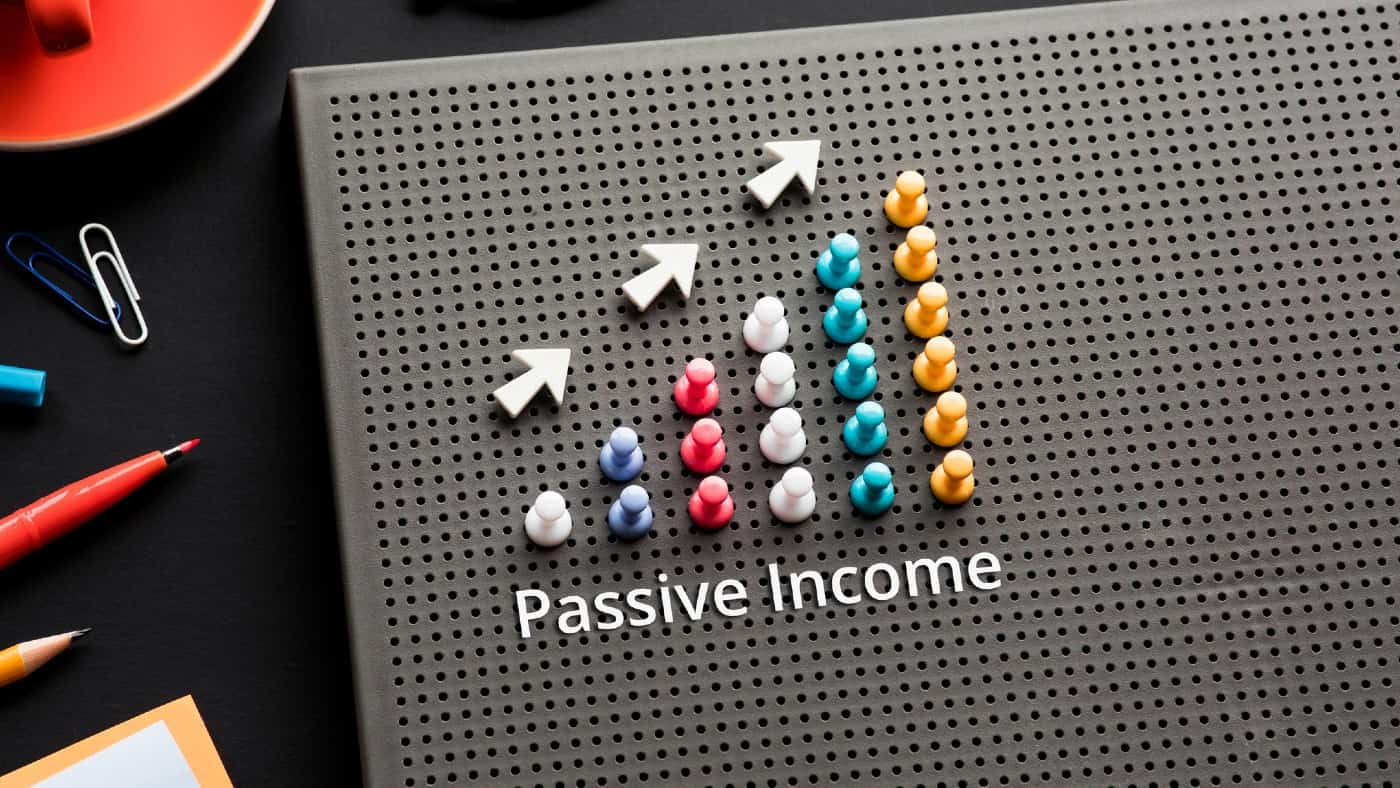

Investment Trust Dividends


The 90% profit distribution rule applied to REITs makes them an attractive option for dividend investors. Here are two of my favourites from the FTSE 250.
Posted by
Mark Hartley

When investing, your capital is at risk. The value of your investments can go down as well as up and you may get back less than you put in.
You’re reading a free article with opinions that may differ from The Motley Fool’s Premium Investing Services.
The FTSE 250 is awash with real estate investment trusts (REITs), a popular choice among investors looking for stable dividend income.
REITs are similar to property investment trusts in that they provide exposure to the housing market. For investors lacking the funds to buy property directly, they’re an easily accessible alternative.
Please note that tax treatment depends on the individual circumstances of each client and may be subject to change in future. The content in this article is provided for information purposes only. It is not intended to be, neither does it constitute, any form of tax advice.
While there are many different ways to build a portfolio aimed at income investing, dividends usually play a role. By reinvesting dividends regularly, growth can be achieved by compounding returns.
REIT dividends tend to be consistent and reliable because the trusts are required to return 90% of profits to shareholders. For UK investors looking to earn passive income, that makes them an obvious choice.
To qualify, the shares must be bought before the ex-dividend date. However, dividends can be cut at any time before this date, so future payments are never guaranteed.
While it’s impossible to say exactly how much passive income can be earned, aiming for a high dividend yield is a good start . This is the amount of the investment that is paid as dividends.
I generally aim to maintain an average yield of around 6%. A rising yield could be offset by a falling price so it’s important to pick well-established REITs with low price volatility.
Two of my favourites are Primary Health (LSE: PHP) and PRS REIT (LSE: PRSR), with 7.5% and 3.5% yields, respectively. They offer exposure to different sides of the market, helping me achieve a balance of yield and price growth.
Primary Health was my first REIT and it’s served me well. It has an attractive 7.5% yield and has been increasing dividends for over 20 years at a rate of 3.2% on average.
As the name suggests, it primarily focuses on managing and developing healthcare facilities such as GP surgeries, medical centres, and clinics. But years of high interest rates have stifled investment, dampening UK property stocks.
The expectation of increased NHS investment under the new Labour government gave it a boost in July. But the October budget put a damper on things, with stifling tax hikes hurting the property market.
It’s now down 45% from a high of £1.67 in August 2021. A similar drop occurred in 2007, with a 127% recovery in the following decade. No guarantee it’ll happen, but I plan to buy more of the shares in anticipation.
A relative newcomer, PRS REIT has only been paying dividends for seven years. They’ve remained steady at 4p per share after being cut from 5p in 2020. Unlike Primary Health, the trust has enjoyed solid growth, up 31% this year but with only a 3.75% yield.
PRS stands for Private Rented Sector, indicating the focus on family homes for rent. The sector enjoyed renewed growth this decade as more people look to rent rather than buy.
However, if interest rates start rising again it could hurt the REIT’s performance. Since it uses debt to finance new acquisitions, higher borrowing costs would push up expenses. And if the economy slumps again, it could reduce tenants’ ability to pay rent.
But with a price-to-earnings (P/E) ratio of 6.2, it currently looks like good value. If the economy holds strong in the new year, I plan to buy more of the shares.
This FTSE 250 firm currently delivers a yield of more than double the index’s average, which could generate very sizeable passive income over time.
Posted by
Simon Watkins
ITV

When investing, your capital is at risk. The value of your investments can go down as well as up and you may get back less than you put in.
You’re reading a free article with opinions that may differ from The Motley Fool’s Premium Investing Services. Become a Motley Fool member today to get instant access to our top analyst recommendations, in-depth research, investing resources, and more.
Shares in FTSE 250 broadcaster ITV (LSE: ITV) are down 18% from their 22 July 12-month traded high of 88p.
This has boosted its return to 6.9% as a stock’s yield moves in the opposite direction to its share price. By comparison, the FTSE 250’s average yield is just 3.3%.
Analysts forecast the dividends will rise in 2025 and 2026 to 5.04p and 5.17p, respectively. Therefore, the yields would increase to 7% and 7.2%.
The average UK savings amount is £11,000. So, investors considering using this to invest in ITV shares would make £759 in first-year dividends. On the same 6.9% average yield, this would rise to £7,590 after 10 years and to £22,770 after 30 years.
However, this passive income could be much greater using ‘dividend compounding’.
In ITV’s case, using this common investment technique on the same average yield would produce dividends of £10,888, not £7,590, after 10 years. And after 30 years on the same basis, this would rise to £75,658 rather than £22,770 !
Adding in the initial £11,000 investment and the ITV shares could be generating £5,979 a year in passive income by that point. That is, as long as it maintains its yield and the share price does not suffer catastrophic losses.

I only buy shares that look undervalued compared to similar stocks. For passive income shares, this reduces the chance of my dividend gains being erased by share price losses should I ever sell them. And conversely, of course, it increases the possibility of my making a profit on share price gains.
My first step in ascertaining whether a share is undervalued is comparing it to other stocks using measurements I trust.
Starting with the price-to-earnings ratio, ITV currently trades at just 6.3. This is bottom of its competitor group, which averages 8.4.
This comprises Métropole Télévision at 6.5, Vivendi at 6.7, MFE-Mediaforeurope at 10, and RTL Group at 10.4.
So, ITV looks very undervalued on this measure..
To work out what this may mean in share price terms, I ran a discounted cash flow valuation using other analysts’ figures and my own.
This shows ITV shares are 68% undervalued at their present 72p price. M
They may go lower or higher than that, given the vagaries of the market, of course. But it confirms to me that they seem underpriced.
A risk here is that the sector in which ITV operates is extremely competitive. This may squeeze its profit margins over time. Another risk is the sub-£1 share price, which increases the effects of price volatility in a stock. Each one-penny drop in ITV’s share price represents nearly 1.4% of its entire value.
However, for an investor at an earlier stage of their investment cycle than me (I am 50+ years old now), this high-yield stock may well be worth considering.
BARCLAYS CUTS ASSURA GROUP PRICE TARGET TO 44 (47) PENCE – ‘OVERWEIGHT’

Whilst everyday is a good day, including weekends and holidays, to have a dividend re-investment plan, some days are much better than others.
thaiofficepro.co.th
Fioravanti69753@gmail.com
204.217.128.7
Please let me know if you’re looking for a writer for your blog. You have some really good posts and I believe I would be a good asset. If you ever want to take some of the load off, I’d absolutely love to write some material for your blog in exchange for a link back to mine.
Please blast me an e-mail if interested. Many thanks !
£££££££££££££
Until the New Year, any new information is scarce, so if anyone want’s to contribute any articles for publication on the blog, next week would be a good time to post.

Currently there is xd income of £1,578 and cash of £770. The most probable destination for the cash is AGR, which would add to the Snowball another £190.00 of income. But as always best to DYOR.
GRS but GR.
Richard Williams
| Best performing funds in price terms | (%) |
|---|---|
| Alpha Real Trust | 9.5 |
| Globalworth Real Estate | 8.5 |
| Residential Secure Income | 5.3 |
| IWG | 4.5 |
| Custodian Property Income REIT | 3.2 |
| Grainger | 3.1 |
| Value & Indexed Property Income Trust | 1.9 |
| Hammerson | 1.8 |
| Workspace Group | 1.8 |
| Supermarket Income REIT | 1.3 |
Source: Bloomberg, Marten & Co
| Worst performing funds in price terms | (%) |
|---|---|
| Grit Real Estate Income Group | (17.6) |
| CLS Holdings | (12.3) |
| Life Science REIT | (12.2) |
| Conygar Investment Company | (11.5) |
| Big Yellow Group | (11.3) |
| Real Estate Investors | (8.8) |
| Safestore | (8.0) |
| Ground Rents Income Fund | (7.6) |
| Target Healthcare REIT | (7.4) |
| Urban Logistics REIT | (7.3) |
Source: Bloomberg, Marten & Co
Real estate share prices settled somewhat in November but were still down 1.4% on average having declined almost 5% in October, as the impact of the budget raised the potential for a higher-for-longer interest rates environment. There was an eclectic mix of positive share price movers in the month, led by real estate debt specialist Alpha Real Trust. Post month end, the company announced that it would seek to delist, offering minority shareholders a tender offer at NAV. Residential Secure Income saw its share price trend upwards for a second consecutive month after announcing a proposed managed wind-down in October. Custodian Property Income REIT’s quarterly valuation update shows that values may have turned a corner (see the valuation moves section below), highlighting that its shares may be too cheap. Hammerson’s continued operational and balance sheet strengthening, including the launch of a £140m share buyback programme, seems to be gaining traction with investors. The reaction to the proposed change in the basis of Supermarket Income REIT’s management fee (from NAV to share price – see corporate news section) has been surprisingly muted.
Potentially higher-for-longer interest rates resulted in many of the highly leveraged or rate sensitive companies suffer once again. Grit Real Estate Income Group, which has a high cost of borrowing, continued to lose value as its share price plummeted another 17.6% over the month, and it has halved in size over the 11 months of 2024. The African real estate developer and investor now has an astonishingly low market cap of around £50m, despite owning a freshly capitalised development partner with lucrative US Embassy-backed diplomatic housing projects in the pipeline. Fellow perennial 2024 share price victims CLS Holdings and Life Science REIT also recorded double-digit declines in November. Office landlord CLS faces a tricky few months with several loans due to mature in 2025. Meanwhile, interest rate hedges in place on debt that Life Science REIT is using to develop its flagship scheme expire next year. The two self-storage operators, Big Yellow and Safestore, both suffered as fears for subdued economic growth and a floundering housing market grew. Ground Rents Income Fund made significant progress in its strategy to sell down assets with the sale of its largest holding (see the news section).

| Company | Sector | NAV move (%) | Period | Comments |
|---|---|---|---|---|
| Care REIT | Healthcare | 0.6 | Quarter to 30 Sept 24 | 1.0% like-for-like increase in property portfolio valuation to £672.1m |
| Custodian Property Income REIT | Diversified | 0.4 | Quarter to 30 Sept 24 | Value of the company’s portfolio was £582.4m, an increase of 0.5% on a like-for-like basis |
| abrdn European Logistics Income | Europe | (0.3) | Quarter to 30 Sept 24 | Portfolio valuation remained stable at €607.5m |
| Triple Point Social Housing REIT | Residential | (1.4) | Quarter to 30 Sept 24 | 0.9% decrease in the valuation of the company’s property portfolio |
| abrdn Property Income Trust | Diversified | (11.3) | Quarter to 30 Sept 24 | Reduction reflects price agreed on sale of company’s portfolio |
| AEW UK REIT | Diversified | 6.2 | Half-year to 30 Sept 24 | Value of portfolio up 2.3% to £215.6m |
| Warehouse REIT | Industrial | 2.5 | Half-year to 30 Sept 24 | Like-for-like portfolio valuation up 2.3% to £811.3m |
| LondonMetric Property | Logistics | 2.1 | Half-year to 30 Sept 24 | 0.7% property valuation increase to £6.2bn |
| Land Securities | Diversified | 1.4 | Half-year to 30 Sept 24 | Portfolio valuation up 0.9% to £9,957m |
| Sirius Real Estate | Europe | 1.2 | Half-year to 30 Sept 24 | Marginal valuation uplift to €2,349.0m |
| Schroder REIT | Diversified | 1.0 | Half-year to 30 Sept 24 | Portfolio valuation increased by 0.9% to £465.5m |
| British Land | Diversified | 0.9 | Half-year to 30 Sept 24 | Values up 0.2% to £8,867m |
| Alpha Real Trust | Debt | 0.7 | Half-year to 30 Sept 24 | Uplift in earnings from high return debt |
| Picton Property | Diversified | 0.3 | Half-year to 30 Sept 24 | Like-for-like portfolio valuation increase of 0.8% to £721m |
| Assura Group | Healthcare | 0.2 | Half-year to 30 Sept 24 | Portfolio valued at £3.1bn following private hospital portfolio buy. Remainder of portfolio flat |
| Helical | Offices | 0.0 | Half-year to 30 Sept 24 | Valuation uplift of 1.3% to £371.9m |
| Urban Logistics REIT | Logistics | (1.4) | Half-year to 30 Sept 24 | Value of portfolio up 0.2% on like-for-like basis to £1.14bn |
Source: Marten & Co

“US stocks tumbled across the board on Tuesday, with the Dow marking its longest losing streak in 46 years,” commented SPI’s Stephen Innes. “This downturn suggests insufficient sector reindeer are pulling their weight to sustain Santa’s holiday rally sleigh, especially against an increasingly perceived hawkish Fed outlook.”
© 2025 Passive Income
Theme by Anders Noren — Up ↑